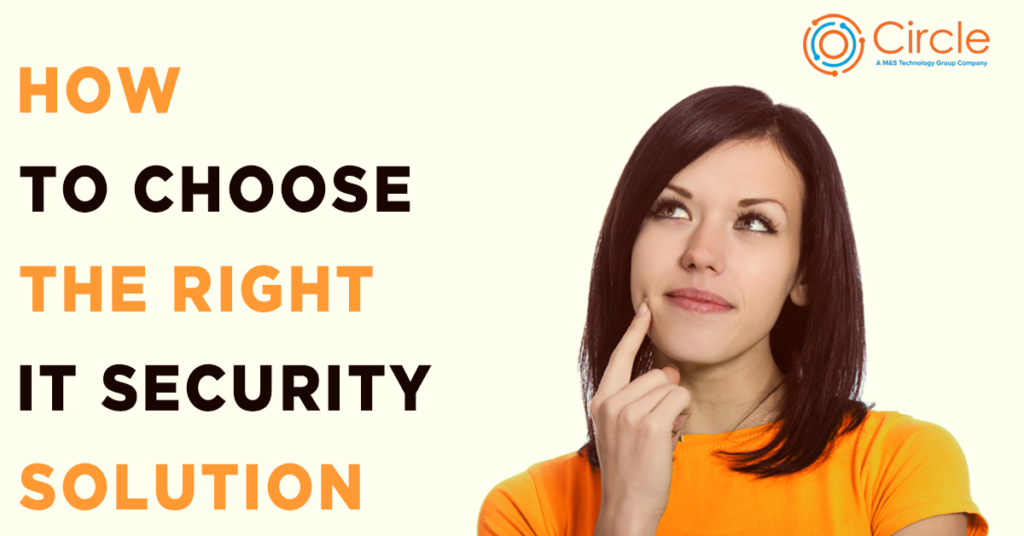
In a growing digital landscape, ensuring robust IT security is a top priority for every type of business. With cyber threats becoming more sophisticated, choosing the right IT security solutions has never been more critical. In this article, we will guide you about the essential factors to consider while choosing the right IT solution.
1. Assessing Your Unique Needs
Before diving into the vast array of IT security solutions available, it’s imperative to conduct a comprehensive assessment of your organization’s specific requirements.
- 1. Identify Your Assets and Vulnerabilities
- Begin by cataloging your digital assets and pinpointing potential vulnerabilities. Understanding what needs protection is the first step in choosing the right solutions.
- 2. Evaluate Your Risk Tolerance
- Determine your organization’s tolerance for risk. Industries like healthcare or finance may require stricter security measures due to regulatory compliance.
2. Understanding the Types of IT Security Solutions
The IT security landscape offers myriad solutions designed to address specific threats. Familiarizing yourself with these options is crucial.
- 1. Antivirus and Anti-Malware Software
- These fundamental tools provide real-time protection against viruses, malware, and other malicious software. They form the cornerstone of any security strategy.
- 2. Firewall Solutions
- Firewalls act as barriers between your internal network and external threats. They filter incoming and outgoing traffic, blocking unauthorized access.
- 3. Intrusion Detection Systems (IDS) and Intrusion Prevention Systems (IPS)
- IDS and IPS are designed to detect and, in the case of IPS, prevent unauthorized access and malicious activities within your network.
- 4. Virtual Private Networks (VPNs)
- VPNs secure data transmission by encrypting communication between remote devices and your network, ensuring confidentiality.
- 5. Endpoint Security
- Endpoint security solutions protect individual devices (e.g., laptops, smartphones) from cyber threats, even outside your network.
- 6. Security Information and Event Management (SIEM)
- SIEM solutions provide comprehensive insights into your network’s security by aggregating and analyzing data from various sources.
3. Scalability and Compatibility
Consider whether the IT security solutions you choose can scale with your organization’s growth and integrate seamlessly with your existing infrastructure.
- 1. Scalability
- As your organization expands, your security needs will evolve. Choose solutions that can easily accommodate this growth without causing disruptions.
- 2. Compatibility
- Ensure the chosen security solutions work harmoniously with your current hardware and software systems. Compatibility issues can lead to inefficiencies and security gaps.
4. User-Friendly Interface
Usability is a crucial factor in selecting IT security solutions. Complex and cumbersome solutions can lead to operational challenges.
- 1. Intuitive Interface
- Look for solutions with user-friendly interfaces that your IT team can navigate efficiently. It reduces the learning curve and enhances productivity.
- 2. Training and Support
- Assess the availability of training resources and customer support from the solution provider. Adequate support can help resolve issues promptly.
5. Compliance and Regulations
Some industries are subject to specific regulations related to data security. Ensure that your chosen IT security solutions align with these requirements.
- 1. Industry-Specific Regulations
- Familiarize yourself with industry-specific regulations, such as HIPAA for healthcare or GDPR for data protection in the European Union. Choose solutions that facilitate compliance.
6. Cost-Effectiveness
While security is crucial, it’s also essential to consider the cost-effectiveness of your chosen solutions.
- 1. Total Cost of Ownership (TCO)
- Evaluate the TCO of IT solutions, considering the starting purchase price and ongoing maintenance and support costs.
- 2. Return on Investment (ROI)
- Assess the potential ROI of each solution. Will it provide sufficient protection for the investment made?
7. Regular Updates and Patch Management
The IT security landscape is ever-evolving, with new threats emerging regularly. Your chosen solutions should offer consistent updates and patch management to address vulnerabilities.
- 1. Automatic Updates
- Solutions that offer automatic updates ensure your security remains up-to-date without manual intervention.
- 2. Patch Management
- Robust patch management capabilities help you address vulnerabilities swiftly, reducing the exposure window to potential threats.
8. Third-Party Testing and Reviews
Before making a final decision, consult independent reviews and consider engaging in third-party testing of potential solutions.
- 1. Independent Reviews
- Look for reviews and assessments from trusted sources within the cybersecurity community. These can quickly provide valuable insights into the effectiveness of various solutions.
- 2. Penetration Testing
- Conducting penetration testing can help identify weaknesses and vulnerabilities in your chosen solutions before deployment.

9. Integration with Incident Response Plans
Your IT security solutions should seamlessly integrate with your incident response plan, ensuring a coordinated response in the event of a breach.
- 1. Incident Response Integration
- Assess how each solution aligns with your incident response procedures. It ensures a cohesive approach to handling security incidents.
10. Vendor Reputation and Support
The reputation of the solution provider and the quality of their customer support are significant considerations.
- 1. Vendor Reputation
- Research the reputation of the solution provider. Are they known for reliability and security expertise?
- 2. Customer Support
- Evaluate the level of customer support provided by the vendor. Timely assistance is essential during critical incidents.
11. Continuous Monitoring and Evaluation
Choosing the right IT security solutions is a process that takes time. Continuously monitor and evaluate their effectiveness.
- 1. Ongoing Evaluation
- Regularly assess the performance of your security solutions and adjust them as needed to address possible threats.
In today’s digital landscape, selecting the ideal IT security solutions is an intricate process that requires a comprehensive understanding of your organization’s needs, the types of solutions available, scalability, usability, compliance, cost-effectiveness, and ongoing evaluation. By carefully considering these factors, you can fortify your organization’s defenses and protect against the ever-evolving landscape of cyber threats.
